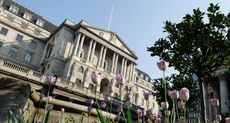India on a promising new footing
In the past decade, the Indian economy has expanded by 6%-7% a year. But there is still clearly vast scope for it to up its game.

In the past decade, the Indian economy has expanded by 6%-7% a year. But it has always suffered from red tape, over-regulation and inefficient tax collection, while half the population doesn't have a bank account. So there is clearly vast scope for it to up its game.
In the past three years, Prime Minister Narendra Modi's administration has been doing exactly that. And last week credit-ratings agency Moody's Investors Service upgraded the country's credit rating for the first time since 2004. It recognised that "bold reforms have put India on the right track", says Una Galani on Breakingviews.
They include a new bankruptcy code, a $32bn package to bolster state banks and ensure that they lend more, and the liberalisation of industries including rail infrastructure, medical devices, and construction, making them more appealing to foreign investors. The government has also created the world's largest digital data base with more than one billion people registering their iris and fingerprint signatures, says Emma Agyemang in the Investors Chronicle.
Subscribe to MoneyWeek
Subscribe to MoneyWeek today and get your first six magazine issues absolutely FREE

Sign up to Money Morning
Don't miss the latest investment and personal finances news, market analysis, plus money-saving tips with our free twice-daily newsletter
Don't miss the latest investment and personal finances news, market analysis, plus money-saving tips with our free twice-daily newsletter
As a result, bank accounts can be opened and up and running in ten minutes. The withdrawal of banknotes last year, meanwhile, was an attempt to combat corruption that encouraged more payments to be channelled through the banking system, thus further broadening the tax base. And replacing the states' many confusing levies with a national GST (VAT equivalent) is an attempt to create a truly single market, making the economy more efficient.
The upshot of all this has been record foreign investment and an impressive rise in the World Bank's Ease of Doing Business rankings, notes Vrishti Beniwal on Bloomberg. India now ranks 100th out of 190 countries, up 30 from last year's report. There is plenty more to be done, however: the World Bank has recommended concentrating on simplifying the process of starting a business.
The immediate outlook, then, is positive, and the long-term potential has always been compelling. The median age is 28 and the middle class is expanding rapidly, paving the way for a surge in consumption over the next decades. While it only accounts for 2% of global manufacturing exports, India has a much stronger foothold in more lucrative service industries such as pharmaceuticals. Our favourite India play, the Aberdeen New India Investment Trust (LSE:ANII), is currently on a 12% discount to its net asset value.
Andrew is the editor of MoneyWeek magazine. He grew up in Vienna and studied at the University of St Andrews, where he gained a first-class MA in geography & international relations.
After graduating he began to contribute to the foreign page of The Week and soon afterwards joined MoneyWeek at its inception in October 2000. He helped Merryn Somerset Webb establish it as Britain’s best-selling financial magazine, contributing to every section of the publication and specialising in macroeconomics and stockmarkets, before going part-time.
His freelance projects have included a 2009 relaunch of The Pharma Letter, where he covered corporate news and political developments in the German pharmaceuticals market for two years, and a multiyear stint as deputy editor of the Barclays account at Redwood, a marketing agency.
Andrew has been editing MoneyWeek since 2018, and continues to specialise in investment and news in German-speaking countries owing to his fluent command of the language.
-
 Most expensive street in Britain to buy on has houses with '£10m average asking price', Rightmove finds
Most expensive street in Britain to buy on has houses with '£10m average asking price', Rightmove findsNews Rightmove found Buckingham Gate, close to Buckingham Palace, was the most expensive street in the country. Do you live near one that's been included on the list?
By Henry Sandercock Published
-
 Smaller companies: starting to turn?
Smaller companies: starting to turn?The long-awaited turnaround in smaller companies is unlikely to happen just because shares are lowly-valued. However, an improving economic and interest rate backdrop could spark renewed interest in the sector. M&A activity is also providing support for the smaller companies sector
By MoneyWeek Published